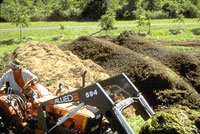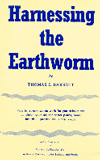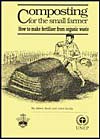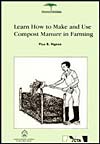
![]()
Search the Journey to Forever website – click HERE
|
Journey to Forever: Make a donation |
Navigation
| Small farms library | |
| City farms | |
| Organic gardening | |
| Composting | |
| Introduction Compost and organics What is compost? |
|
| Making compost | |
| Good compost How not to fail Greens and browns Hints Compost containers Assembling the materials Adding liquids Batches Animal manure Sifting Cold weather |
|
| Composting resources | |
| Virtual composting Core texts General composting |
|
| Composting indoors | |
| Think small Filling the bin Problems Think even smaller Resources |
|
| Vermicomposting | |
| Vermicompost and plants The worms Breeding Worm boxes Dimensions Bedding Feeding Harvesting Problems Garden wastes Using vermicompost |
|
| Vermicomposting resources | |
| Humanure | |
| Foundation work Modern developments Best of all! |
|
| Composting for small farms | |
| Foundation work On-farm composting resources |
|
| Small farms | |
Contact usTo Keith Addison Handmade Projects |
Composting for small farms
Whether it's in your apartment, a kitchen garden, a vegetable plot or a farm, compost is compost and making it always follows the same principles -- and gives the same benefits.
An Agricultural Testament by Sir Albert Howard, Oxford University Press, 1940. "Farm-Scale Composting Resource List", Agronomy Resource List from the Appropriate Technology Transfer for Rural Areas (ATTRA) -- companion to ATTRA's "Sustainable Soil Management" Soil System Guide (same site). Reading List, References, Associations, Web Resources, Software, Magazines, Newsletters & Journals, E-mail Discussion Lists & Web Forums, Bibliographies, Current Research.
Farms produce a greater bulk of organic matter, which makes it easier -- the more bulk the more forgiving the process -- and makes it harder too: how do you shift all that stuff? And how do you use it once it's made?

From the "On-Farm Composting Handbook" (NRAES)
First, read the Composting section in our Organic gardening pages. Read the Organic gardening pages too for an introduction to organics: again, the same principles apply to farms.
The basic and best How-to's and Why-to's are still the foundation texts written by the founders of the organics movement, below.
Foundation work
This is the book that started the organic farming and gardening revolution, the result of Howard's 25 years of research at Indore in India. The essence of organics is brilliantly encapsulated in the Introduction, which begins: "The maintenance of the fertility of the soil is the first condition of any permanent system of agriculture." Read on! Full explanation of the Indore composting process and its application. Excellent on the relationship between soil, food and health. Full text online at the Journey to Forever Small Farms Library.
The Waste Products of Agriculture -- Their Utilization as Humus by Albert Howard and Yeshwant D. Wad, Oxford University Press, London, 1931
Where Howard's An Agricultural Testament charts a new path for sustainable agriculture, this previous book describes how the Indore composting system which was the foundation of the new movement was developed, and why. Howard's most important scientific publication. Full text online at the Journey to Forever Small Farms Library.
Farming and Gardening for Health or Disease (The Soil and Health) by Sir Albert Howard, Faber and Faber, London, 1945, Devin-Adair 1947, Schocken 1972
This is Howard's follow-up to An Agricultural Testament, extending its themes and serving as a guide to the new organic farming movement as it unfolded -- and encountered opposition from the chemical farming lobby and the type of agricultural scientists Howard referred to as "laboratory hermits". Together, the two books provide a clear understanding of what health is and how it works. Full text online at the Journey to Forever Small Farms Library.
See a review of Albert Howard's work, plus a short bibliography and links to his major works and some of his published papers, at the Journey to Forever Small Farms Library.
The Earth's Green Carpet by Louise E. Howard, 1947, Faber & Faber, London
In this unusually clear book, Lady Howard (Sir Albert Howard's wife), has written a "layman's introduction" which is also a work of literary distinction. Her subject is nothing less than the life cycle studied as a whole, and this leads inevitably to the importance of a reformed agriculture for the health of the community. She saw the need for a popular introduction to her husband's revolutionary ideas and principles, and her book draws a vivid picture of what lies behind the appearance of the Earth's green carpet. "Nature is not concerned to give us simple lessons," Lady Howard says -- and yet she transmits them here with admirable simplicity and clarity, a delight to read. More than an introduction, the book is a survey of the whole body of work of the pioneers of organic farming and growing. Full text online at the Journey to Forever Small Farms Library.
Sir Albert Howard in India by Louise E. Howard, Faber & Faber, London, 1953, Rodale 1954
Albert and Gabrielle Howard worked as fellow plant scientists and fellow Imperial Economic Botanists to the Government of India for 25 years, and this is a study of their work by Sir Albert's second wife Louise (sister of Gabrielle, who died in 1930). It's a classic study of effective Third World development work. Initially involved with improving crop varieties, the pair soon concluded it was futile to fiddle with seeds unless the work took full account of the system and circumstances as a whole. Thus developed a sustained interest in putting agricultural research into its right relation with the needs of the people, and a fundamental belief in peasant wisdom. Results were useful only if they could be translated into peasant practice. This led to the development of the famous Indore system of composting organic wastes: improved seeds were no use in impoverished soils. It's a great story. Full text online at the Journey to Forever Small Farms Library.
The Medical Testament published by the 31 doctors of the Cheshire Panel Committee in England on March 22 1939 was a milestone in the development of the infant organic farming movement. It acknowledged great advances in the realm of cures, but rather the opposite when it came to prevention. It also explained why this was so, and offered the remedy, plus the proof of it: "A fertile soil means healthy crops, healthy animals and healthy human beings." This is a classic document, now long out of print -- a lost classic. We tracked down a copy of the original pamphlet, plus some of the associated documents and publications -- 15 papers in all, virtually a book, all available in full-text online at the Journey to Forever Small Farms Library. This is what organics is all about.Farm composting resources
http://www.attra.org/attra-pub/farmcompost.html
"On-Farm Composting Handbook", Northeast Regional Agricultural Engineering Service, Waste Management Publications: NRAES-54, 1992, ISBN 0-935817-19-0, 186 pages -- This prize-winning handbook gives a thorough overview of farm-scale composting and explains how to produce, use, and market compost. Benefits and drawbacks, the process, raw materials, methods, operations, management, site and environmental considerations, using compost, marketing, economics, and other options for waste management, with figures, tables, calculations, references (over 160 publications), and glossary. Order online:
http://www.nraes.org/nra_order.taf?_function=
detail&pr_booknum=nraes-54
"Field Guide to On-Farm Composting", Northeast Regional Agricultural Engineering Service, Waste Management Publications: NRAES-114, 1999, ISBN 0-935817-39-5, 128 pages -- Day-to-day compost system management, for on-site use. Companion book to the "On-Farm Composting Handbook".
http://www.nraes.org/nra_order.taf?_function=
detail&pr_booknum=nraes-114
"Preparation and Use of Compost", Agrodok No. 8, Agrodok Publications, Agromisa Foundation, 1994, ISBN 90-72746-52-X
The Agrodok booklets are useful and practical how-to guides. Covers composting methods, composting process, organic material types, organic fertilizer, compost as fish food, practical requirements for making a good compost heap, three composting methods: Indore, Bangalore and heating-process method, all applicable worldwide. Practical use of compost in small-scale farming. Download here (544 kb pdf).
 "Harnessing the Earthworm" by Dr. Thomas J. Barrett, Humphries, 1947, with an Introduction by Eve Balfour, Wedgewood Press, 1959, Bookworm, ISBN 0916302091
"Harnessing the Earthworm" by Dr. Thomas J. Barrett, Humphries, 1947, with an Introduction by Eve Balfour, Wedgewood Press, 1959, Bookworm, ISBN 0916302091
"A practical inquiry into soil building, soil conditions, and plant nutrition through the action of earthworms, with instruction for the intensive propagation and use of domesticated earthworms in biological soil building." Well-researched, well-written, pioneering book on vermicomposting, very positive outlook, a refreshing read. Includes Dr George Sheffield Oliver's famous story "My Grandfather's Earthworm Farm" -- inspiring! Facts, figures and illustrations, details of Barrett's Earthmaster Culture Bed. Buy at Amazon.com: Harnessing the Earthworm
"The Compost Connection" on-line newsletter from the Washington State University's Center for Sustaining Agriculture and Natural Resources (CSANR). Free on-line issues date from June 1996 to August 2000, when publication ended. Covers farm-scale compost production, compost analysis, using compost, compost resources.
http://csanr.wsu.edu/programs/compost/compostnewsletter.htm
"Worm Digest" quarterly newsletter on using worms for composting (vermicomposting), small- to large-scale production, world-wide coverage. Networks people, information and resources. Online articles, vermicomposting forum, back issues, article search, and more.
http://www.wormdigest.org/
 Composting for the Small Farmer -- How to Make Fertilizer from Organic Waste, by Albert Aboli and John Scully, Foundation for Sustainable Development in Africa and United Nations Environment Programme,
Composting for the Small Farmer -- How to Make Fertilizer from Organic Waste, by Albert Aboli and John Scully, Foundation for Sustainable Development in Africa and United Nations Environment Programme,
September, 1993, 24 pages, illustrated -- Low-tech methods can give high-quality results: this clear and concise booklet covers the basics well. Aimed at 3rd World farmers, of interest to all small farmers and gardeners. Full text free online at the CD3WD 3rd World Development online library:
http://www.fastonline.org/CD3WD_40/CD3WD/
WATSAN/H1011E/EN/B356.HTM
 Learn how to Make and Use Compost Manure in Farming, by Pius B. Ngeze, Stantex Publishers and Friends-of-the-Book Foundation, Nairobi, Kenya, 1982, 1998, 54 pages -- Basic instructions on producing high-quality compost on-farm, using 1-cubic-metre layered heaps in boxes. For small farmers in the 3rd World, and for anyone interested in organic growing. Full text free online at CD3WD 3rd World Development online library:
Learn how to Make and Use Compost Manure in Farming, by Pius B. Ngeze, Stantex Publishers and Friends-of-the-Book Foundation, Nairobi, Kenya, 1982, 1998, 54 pages -- Basic instructions on producing high-quality compost on-farm, using 1-cubic-metre layered heaps in boxes. For small farmers in the 3rd World, and for anyone interested in organic growing. Full text free online at CD3WD 3rd World Development online library:
http://www.fastonline.org/CD3WD_40/CD3WD/
WATSAN/H1078E/EN/B1057_9.HTM
Manual of On-Farm Vermicomposting and Vermiculture -- by Glenn Munroe Organic Agriculture Centre of Canada: good coverage of the why-to's and how-to's of vermicomposting for farmers, 56-page illustrated pdf (1.5 Mb).
http://www.organicagcentre.ca/DOCs/Vermiculture_FarmersManual_gm.pdf
City farms
Organic gardening
Building a square foot garden
Plant spacing guides
No ground? Use containers
When to sow what
Seeds
Garden pond
Gardening resources
Composting
Making compost
Composting resources
Composting indoors
Vermicomposting
Humanure
Composting for small farms
Small farms
Small farm resources
Community-supported farms
Farming with trees
Farming with animals
Pasture
Pigs for small farms
Poultry for small farms
Aquaculture for small farms
Composting for small farms
Controlling weeds and pests
Small farms library